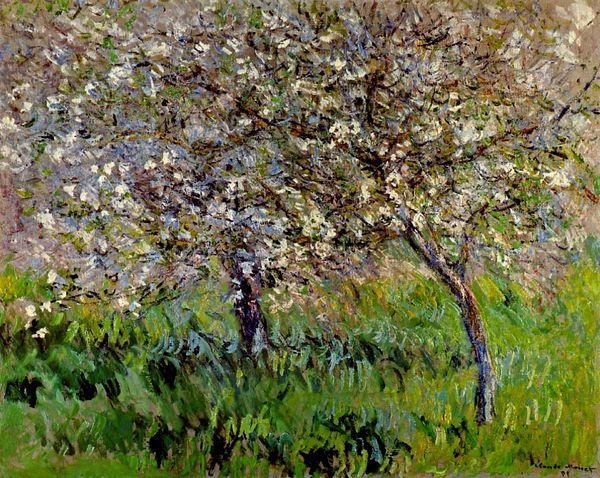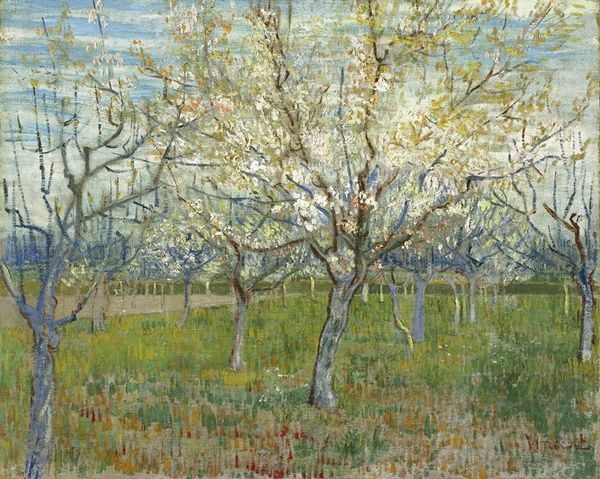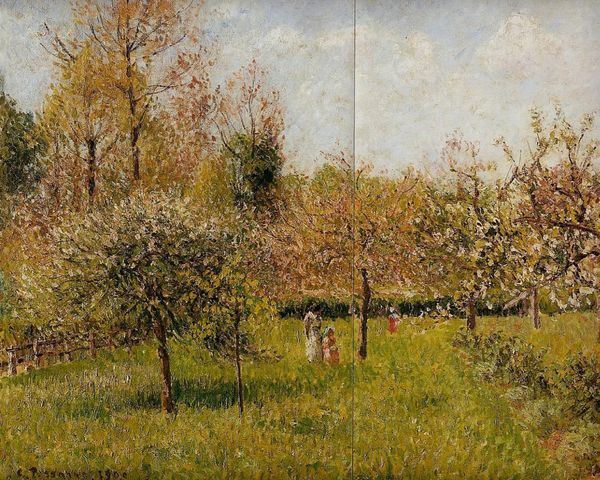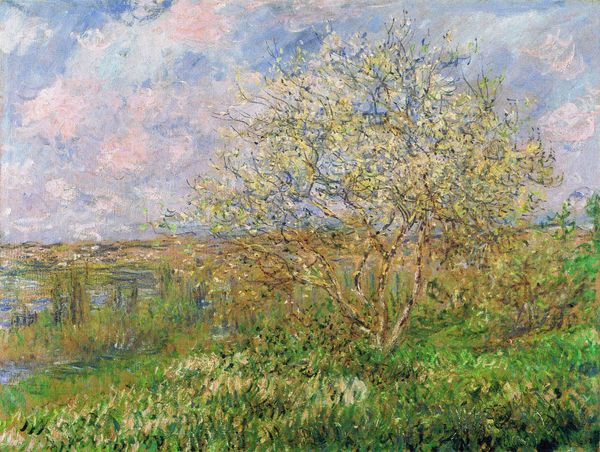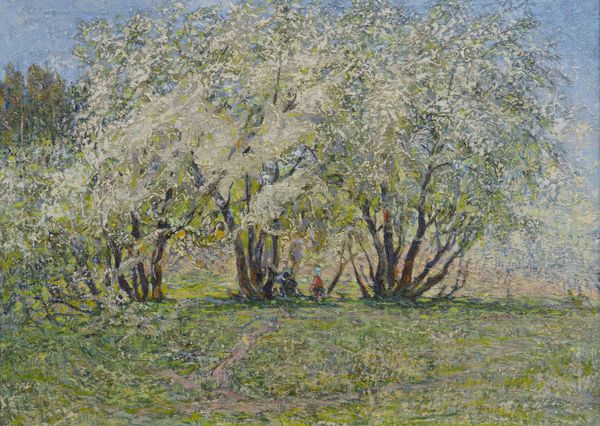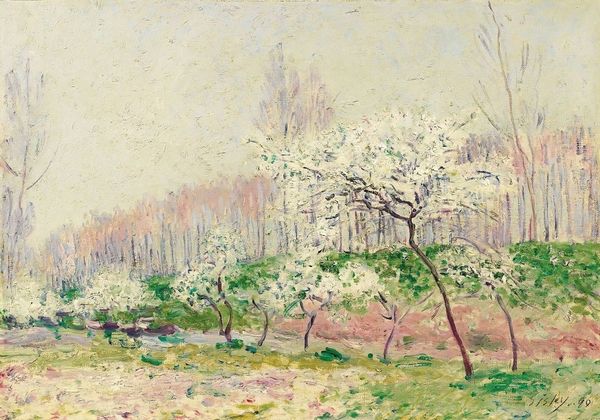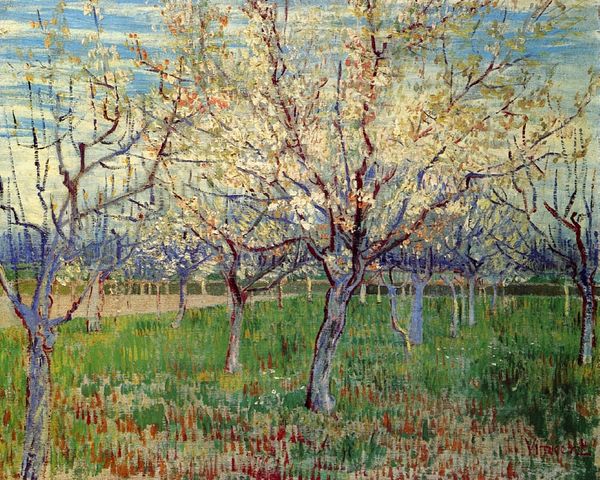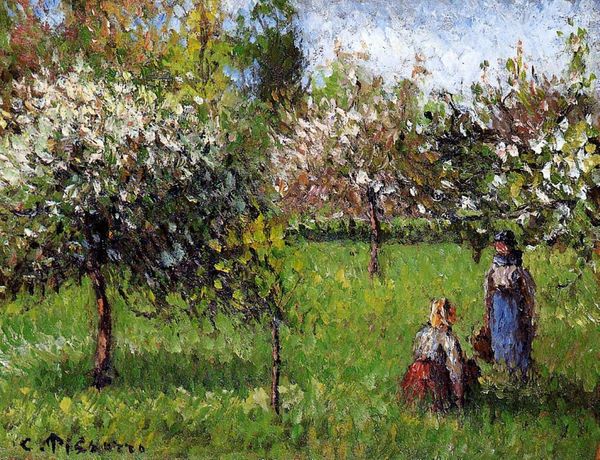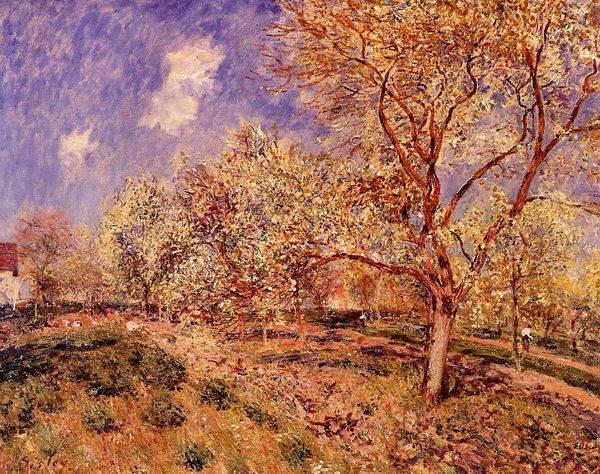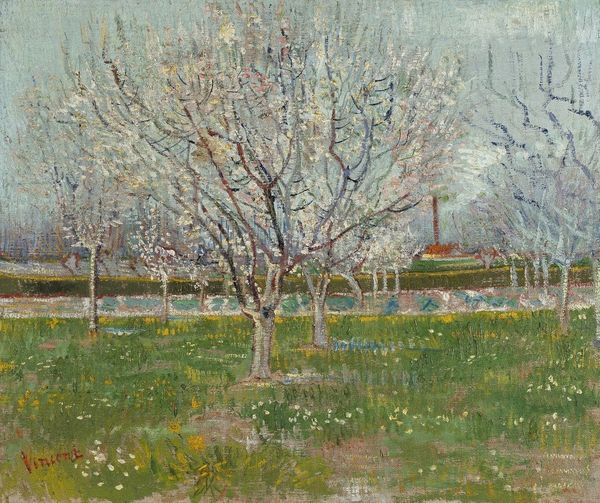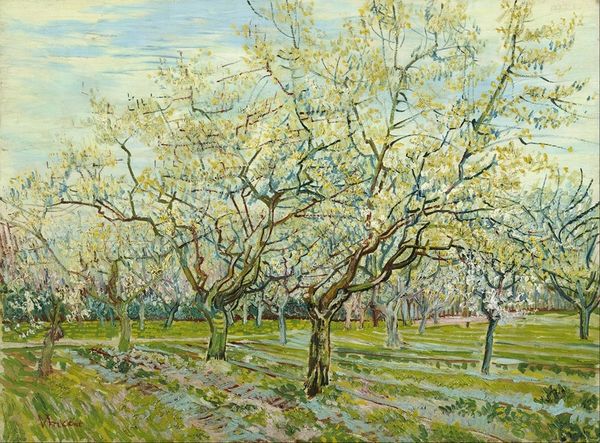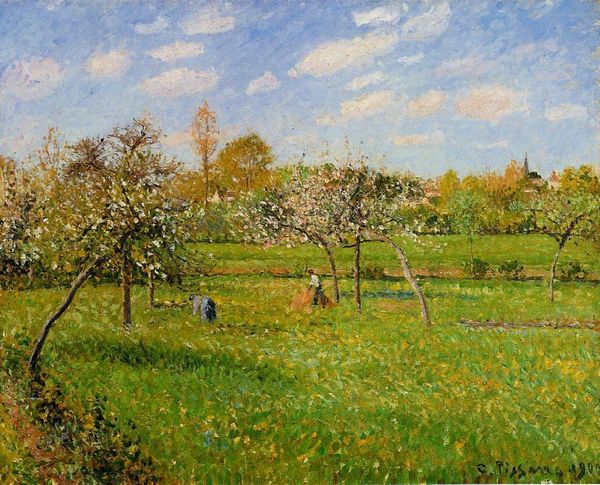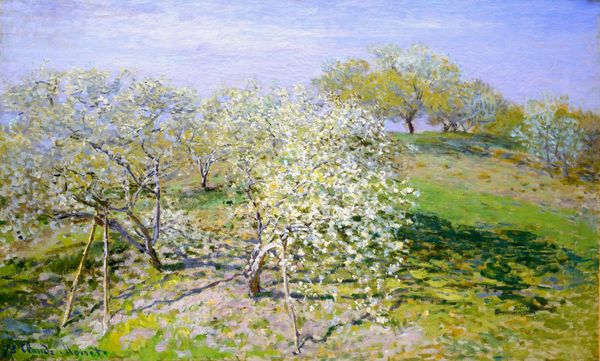
Dimensions: 80.6 x 64.8 cm
Copyright: Public domain
Curator: Claude Monet's oil painting, "Springtime," created in 1886 and now residing in the Fitzwilliam Museum, presents us with a canvas alive with blossoming trees. Editor: My initial impression is of something ethereal. It's a study in the dissolution of form; light dominates everything. Curator: Indeed. Notice how Monet employs impasto—thick strokes of paint—to build texture and capture the fleeting effects of light filtering through the branches. The composition avoids any rigid structure; the eye is invited to wander. Editor: And what a perfect title, "Springtime"! Spring carries connotations of birth, renewal, and hope—ideas strongly associated with images of flora and, especially, blossom. In Western culture, blossom trees are synonymous with virginity. Curator: Precisely. The choice of palette here is significant: primarily pastels—soft pinks, blues, and whites—creating a sense of tranquility. There’s very little linear definition of forms. Editor: There's almost a hazy dream-like state. The figures nestled in the scene are partially obscured, which removes our sense of them being specific people; perhaps they are every-woman figures? They evoke feelings of tenderness and the gentle pleasures of leisure, suggesting a connection with nature. Curator: The brushstrokes are quite broken, separate flecks of color, juxtaposed to create the illusion of form. This contributes to a feeling of transience, of a moment caught in time rather than a static representation. The foreground is almost aggressively abstract. Editor: Looking at those almost abstract brushstrokes brings to my mind ideas about pre-Raphaelite paintings that have moral meaning invested in elements from the natural world, especially flowers and blossoms. In addition to innocence, spring might reference new love. Curator: Well, it appears that Monet captured not just a scene, but a feeling, an experience of light and renewal. Editor: The painting encourages us to look beneath surface appearances and ponder the transient beauty of life and nature’s persistent symbolism. It makes you appreciate how images stay with you.
Comments
No comments
Be the first to comment and join the conversation on the ultimate creative platform.

